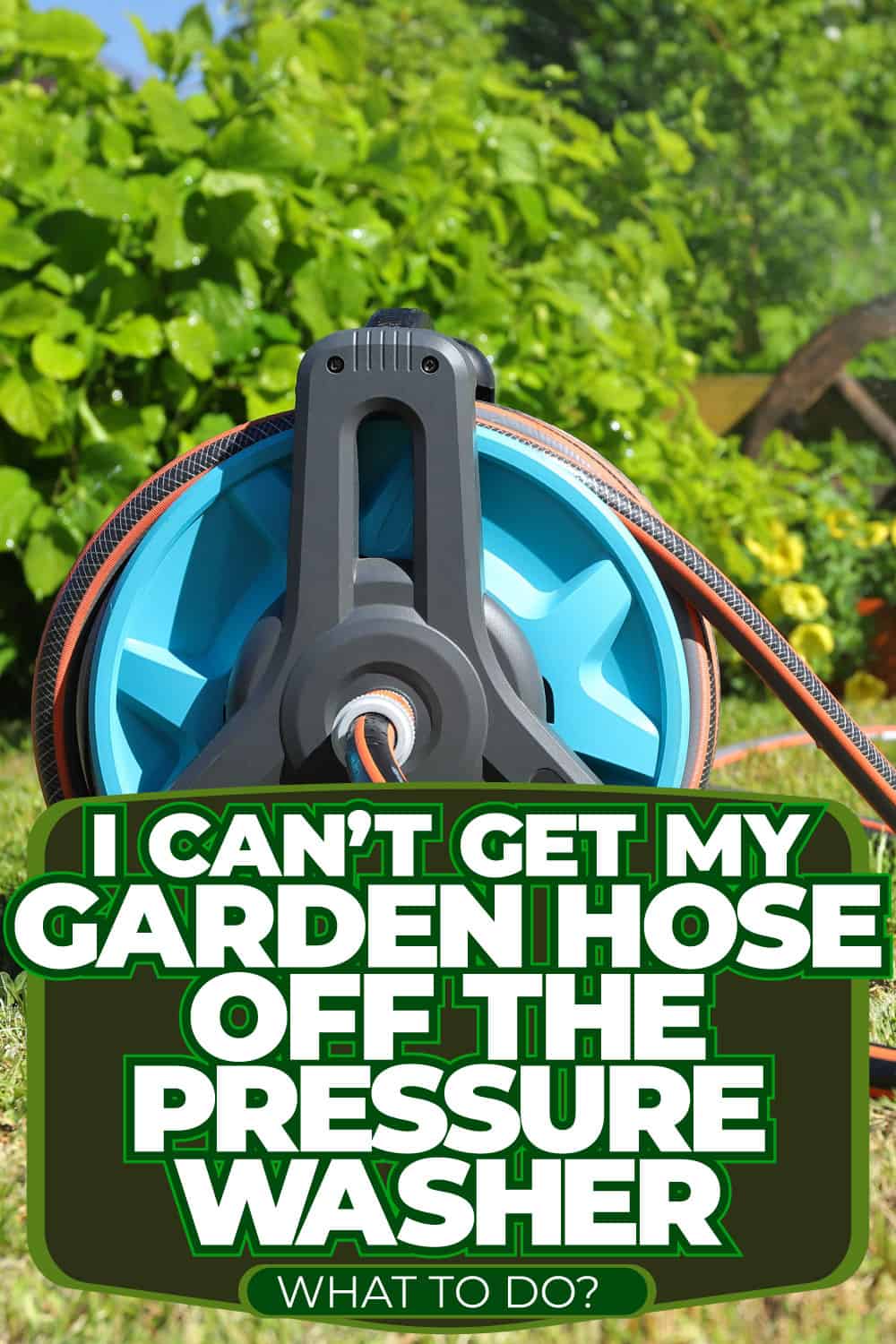When watering your plants, a garden hose is your best friend. However, there are occasions when you attempt to remove your garden hose from a pressure washer, and it just won't budge. Fortunately, we are here to assist you with that issue.
Follow these simple steps to remove your garden hose from your pressure washer correctly.
- Turn off your pressure washer
- Discharge all pressure from the washer
- Loosen the connector or plug
Continue reading for more information on removing your garden hoses from the pressure washer. We will also delve deeper into important garden hose information. So, read on.
How Do You Properly Remove A Garden Hose From A Pressure Washer?
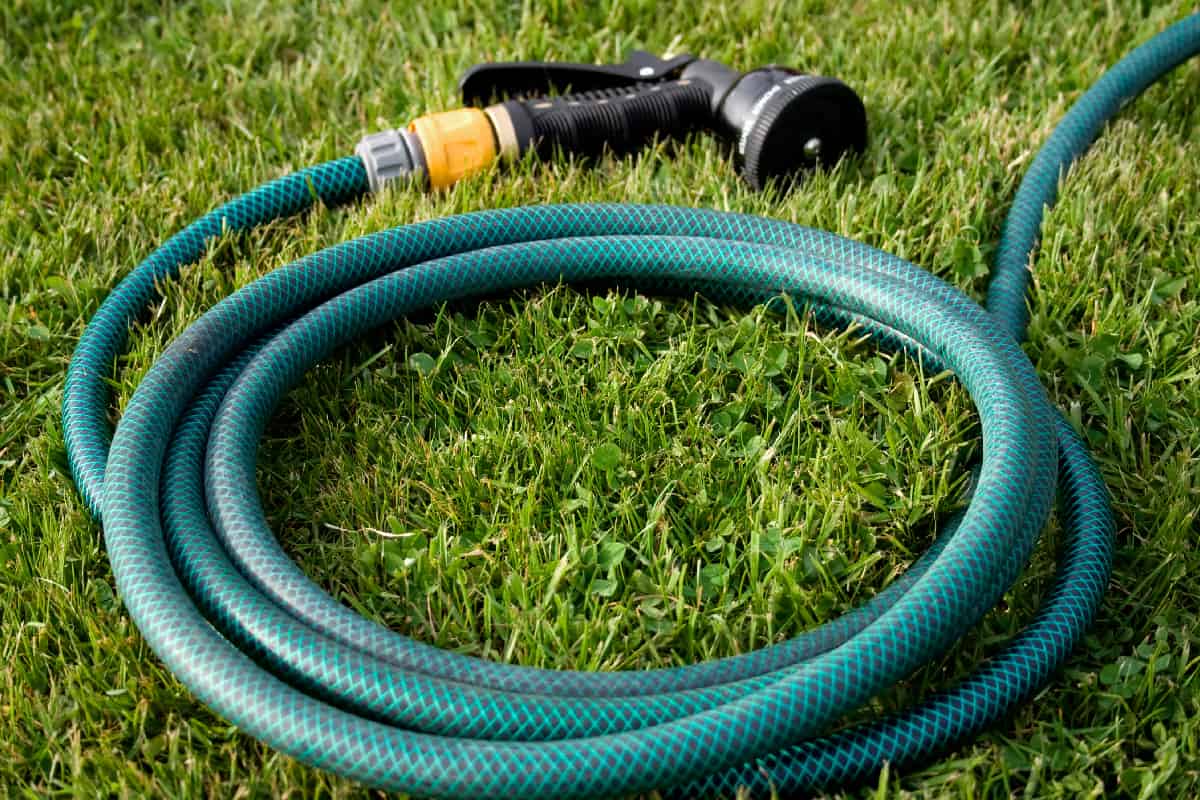
The " data-lasso-id="27569">steps for removing a stuck garden hose from a pressure washer are outlined below.
Step 1-Turn Off Your Pressure Washer
First, make sure your hands are properly protected with gloves. When performing this task, turn off your pressure washer and disconnect it from the water supply first.
Click to see these Gloves on Amazon.
Step 2-Discharge All The Pressure From The Washer
Squeeze the trigger to release all of the pressure. If you keep working without releasing the pressure, you will most likely drench your face with the remaining water.
Grip the stainless steel or brass fast-connect fitting at the end of the knurled section of your hose. Then, push it toward the pump of your pressure washer.
Step 3-Loosen The Connector Or Plug
Use a wrench to make it easier to loosen the connector or plug. Loosen the garden hose connector end, then rotate the connector end up or down, left or right, to free the hose from the connector.
Use lubricants or hot water if your wrench cannot loosen the connectors. Liquids will assist you in loosening the connectors without much difficulty.
If you still can't remove it after attempting the first two options, you can resort to cutting the hose. In this case, you must ensure that you have a new, ready-to-use hose. You will almost certainly waste a day without a spare hose.
Click to see this Wrench on Amazon.
Click to see this WD-40 on Amazon.
Click to see this Garden Hose on Amazon.
How Long Does A Garden Hose Last?
With good care, a rubber garden hose should last 5 to 10 years with minimum daily use. However, if the hose is not properly maintained, it may need to be replaced sooner. Even if the hose is high quality, leaving it out in the sun and muck reduces its longevity.
What Are Some Garden Hose Maintenance Tips?
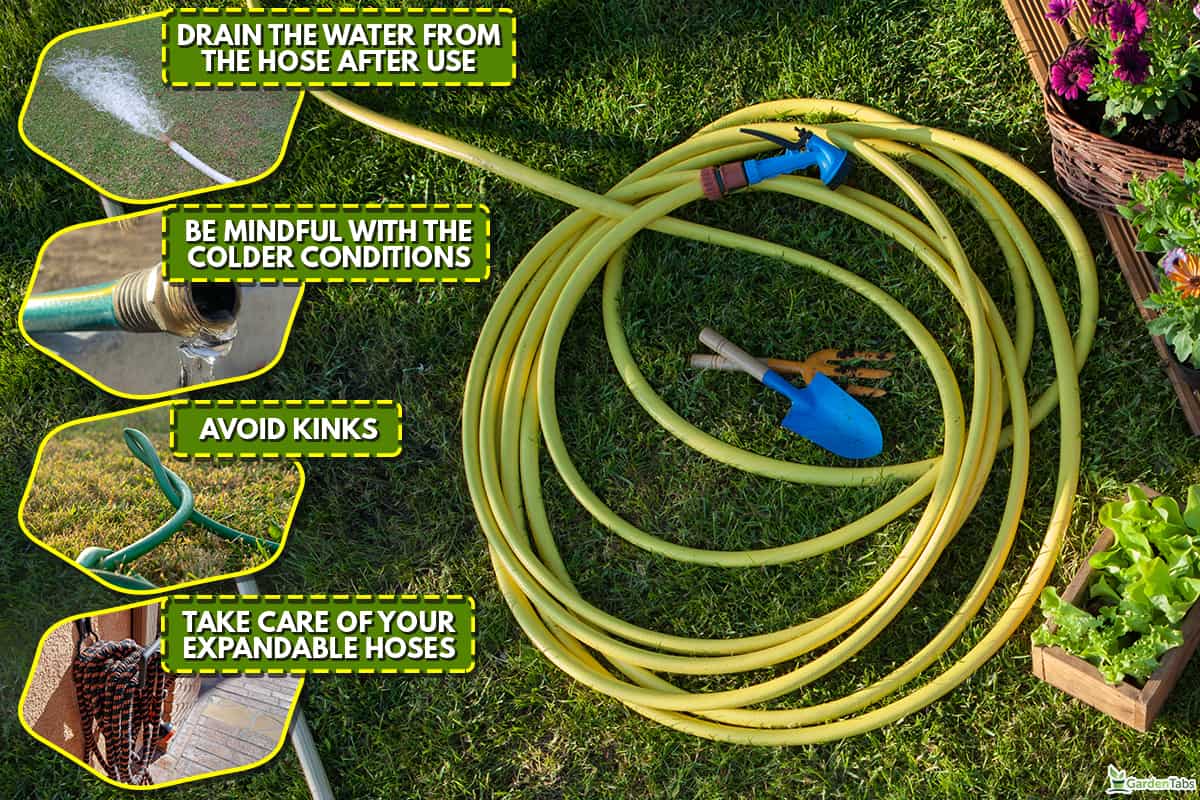
Properly maintaining your hose means you won't have to buy a new one because your old one has failed due to preventable wear and tera. By spending a modest amount of effort in hose protection and following a basic garden hose management practice, you may dramatically enhance the lifespan of your hose.
Always Drain The Water From The Hose After Use
Leaving water in the hose might lead to undesired microorganisms growing in the hose's inside funnel. This can lead to inner tube degeneration, so drain all excess water before storing the hose. This is why, whenever you use the hosepipe, you should always let it run dry.
Be Mindful With The Colder Conditions
Constantly applying water pressure to your hose is bad for it. While you might get away with it during the warmer months, a hose full of water is a recipe for disaster once the first freeze hits.
Water expands when it freezes, and if your hose isn't up to the task, it will crack under pressure. Make it a habit to unhook your garden hose at the reel before reeling it in. As you wind the hose onto the reel, the water will dribble out, sparing you with the agony of premature hose retirement.
Avoid Kinks
One of the most prevalent reasons for hose replacement is chronic or severe kinking, which causes irreversible damage to your hose. While these concerns might be associated with old age, they frequently occur early due to poor care.
When considering why your hose is kinking, several factors include excessive sun and heat exposure, incorrect storage, and highly centralized pressure on a specific location along your line.
To avoid this problem, never hang your hose on a nail. Rather, invest in a hose hanger or storage system accommodating large loops. The hose should be stored away from direct sunlight, ideally indoors or under cover.
Click to see this Hose Hanger on Amazon.
Take Extra Care Of Your Expandable Hoses
Expandable hoses are lightweight and simple to use, but their shelf life is remarkably short compared to regular hoses. The material on the outside is easily snagged or torn, and the stretchy rubber is prone to breaking if overstretched, dragged over rough ground, or left out in freezing temperatures for an extended period of time.
If you have an extendable hose, store it indoors if possible during the winter and use it with caution. They are simply not as long-lasting as typical hoses.
Click to see this Expandable Hose on Amazon.
How Do You Repair Garden Hose Leaks?
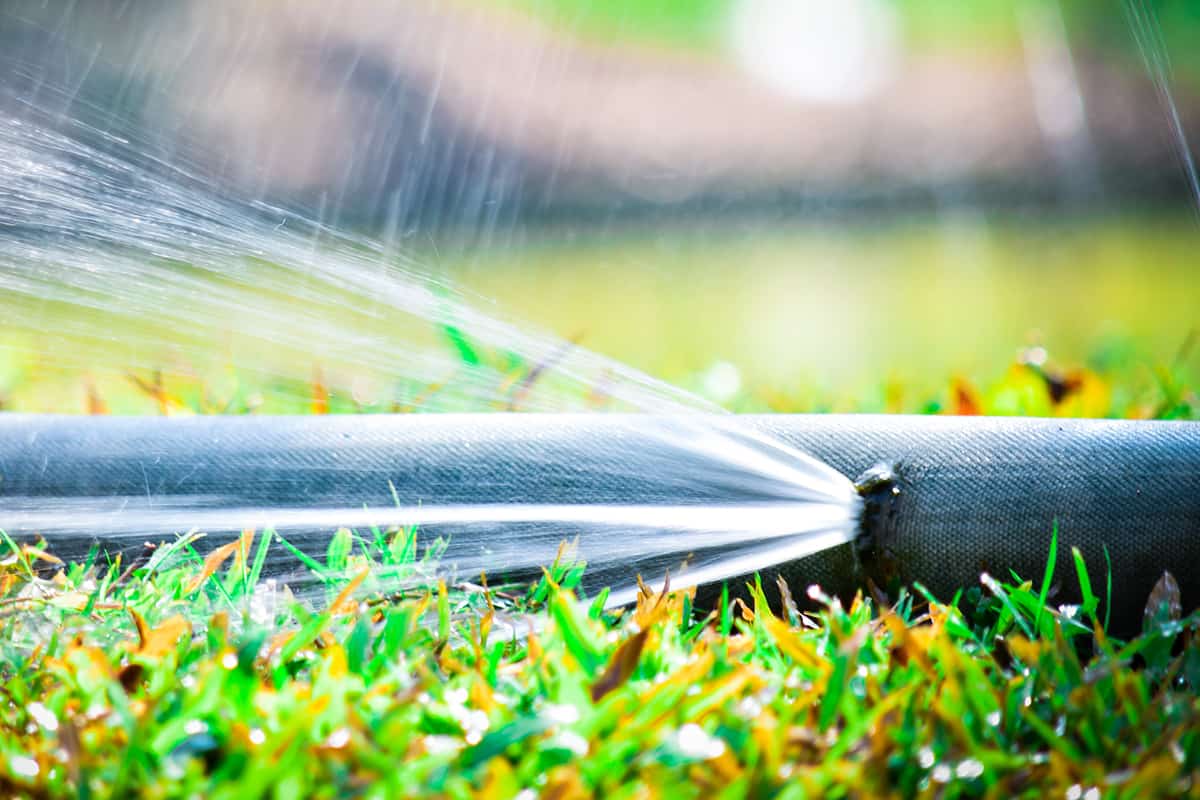
A leak in a garden hose is usually easy to detect. It may spray you in the face, but don't get irritated and throw the hose away. Often an easy, low-cost repair can get your hose back in shape.
Small Leaks
Pesky pinholes are typically only noticeable to the naked eye when you connect the water and see little geyser-like spurts of water from the damaged area of the hose. Small leaks can move water away from the lawn or plants you want to water, as well as squirt you in the eye.
Use normal electrical or specially developed hose repair tape to patch a small leak. Before using it again, clean and dry the hose. Wrap the tape around the hose, overlapping it. Wrapping it too firmly will cause the hose to fold and the tape won't seal.
Click to see this Electrical Tape on Amazon.
Leaking Spigot
A washer replacement is the most basic of repairs and is frequently all that is required. Washers degrade or dry out with age. Simply remove the old one and replace it. If the leak persists, replace the coupler.
Click to see this Washer on Amazon.
Large Leaks

Replacing a hose end or fixing a middle part is slightly more complicated but still straightforward. The damaged section must be removed and replaced with a mender for repair. Make straight cuts with a sharp blade to remove broken parts.
Bring the removed portion with you while shopping for a replacement to ensure you get the right repair part. The designs of repair parts vary depending on the manufacturer. Also, be certain that the part you choose is appropriate for the material of your hose, whether rubber or vinyl.
To make it easier to replace fittings, ensure the hose is clean and dry. To make the area you're fixing more pliable and simpler to deal with, rub some soap on it.
Remove the damaged section of the hose with care, leaving the ends as square as possible. Remove both screws from the replacement coupler. Insert the cut end of each hose portion into one side of the clamp mender, making sure it is fully inserted.
Tighten the screws properly until the clamp is secure enough to keep the hose from slipping out. Turn on the water and attach the hose to a sprinkler or nozzle to test the connection. If water leaks, tighten the connection until it is no longer leaking.
What Factors Should You Consider When Buying a Garden Hose?
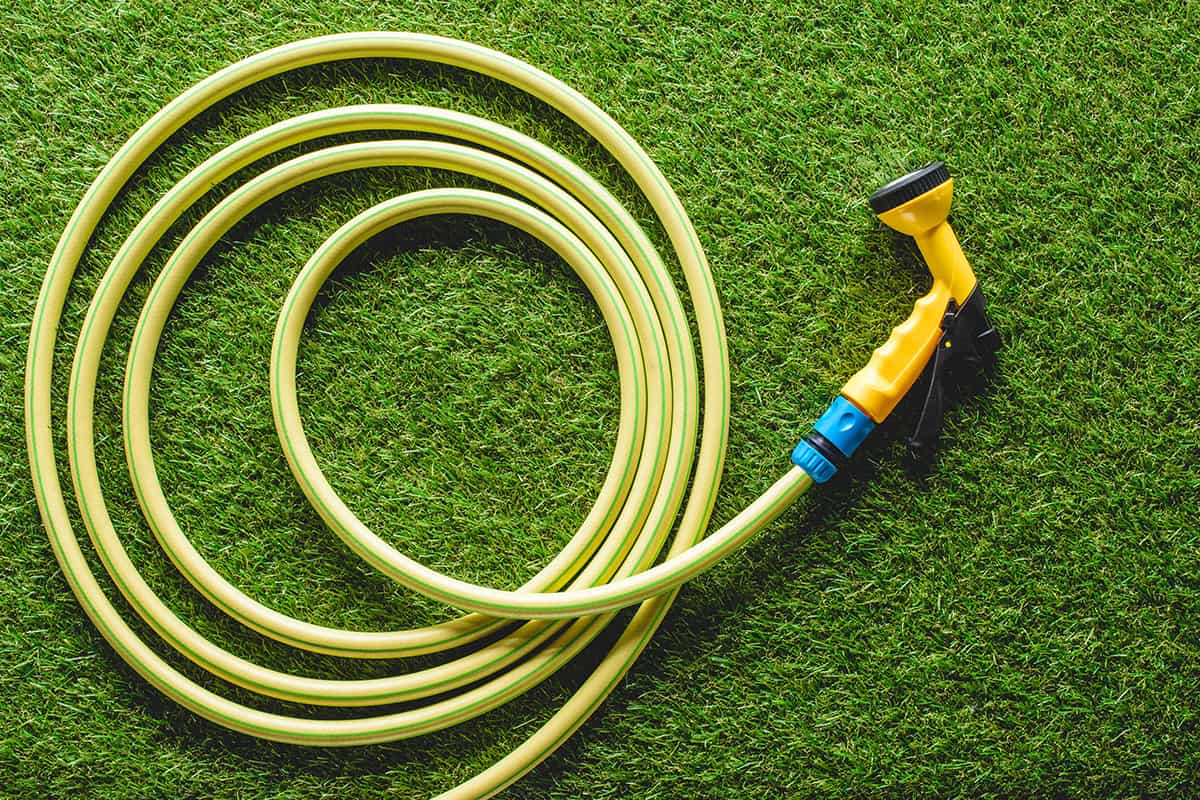
Garden hoses come in a variety of colors, sizes, and shapes, and some have characteristics like kink resistance, multiple construction, or microbiological protection. You'll also find more robust hoses that include extra features, such as a water-flow control valve that allows you to switch off the water flow and change nozzles quickly.
Length
Garden hoses are offered in increments of 25 feet, with total lengths ranging from 25 to 100 feet. Water pressure decreases as the hose length grows, so buy a hose that is only long enough to reach where you intend to use it.
If you occasionally need a long hose, buy two shorter ones and mix them as needed. Shorter hoses are provided to access hard-to-reach spigots or for patio use.
Materials
Vinyl and vinyl-reinforced hoses are low-cost, lightweight, and simple to use. Rubber hoses and rubber-reinforced hoses are heavier and last longer. Reinforced hoses are more resistant to temperature fluctuations and are less prone to kink or burst. Plastic hoses that are ultra-flexible, lightweight, and easy to store are another choice.
 Click to see these Vinyl Hoses on Amazon.
Click to see these Vinyl Hoses on Amazon.
Sizes Or Hose Diameter
Hose diameters range from 3/8 to 1/2 to 3/4 inches. Most common garden hoses are 5/8 inches in diameter—the greater the diameter, the greater the flow of water.
Coupling Or Fittings
The coupler is the point at which the hose connects to the water supply. Brass and plastic are your two main options. Brass is more robust than plastic. However, tightening the spigot may be problematic for somebody with limited hand strength.
Choose a hose with an ergonomically designed plastic coupler for easy hand-tightening. Some hoses are strengthened near the coupling to help avoid kinking at the faucet.
Click to see these Plastic Fittings on Amazon.
It's A Wrap
Getting your garden hose off a pressure washer is a straightforward task you can complete with little effort, time, and simple tools. To do the jobs correctly and efficiently, follow the easy instructions mentioned above.
If you found this post helpful, check out these related articles:
Will A Garden Shredder Shred Bamboo?
